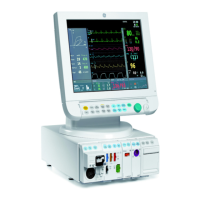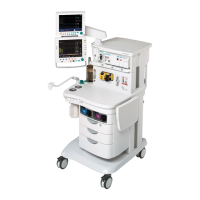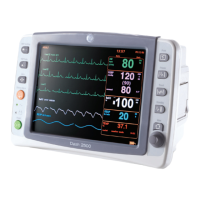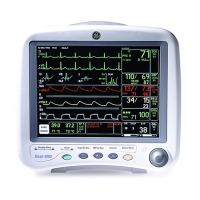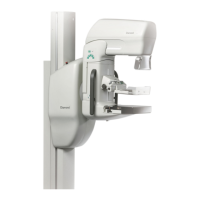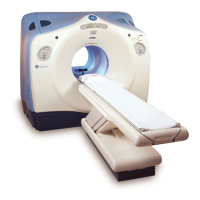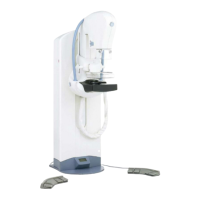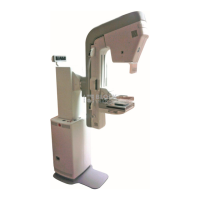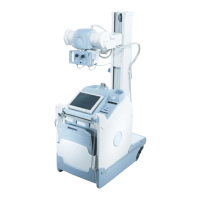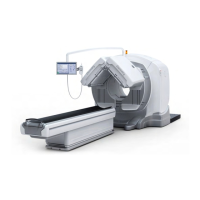21
Document no. M1144953-001
Zero the InvBP channel. Then check that the values and waveforms correspond to the
simulator settings.
"
SvO
2
measurement
4. Check that the SvO
2
values Meas. state, OM fail and OM temp. in the COP module service
menu all show NO OM.
5. Checks with the SvO
2
simulator:
Turn the SvO
2
simulator pulsation switch to Medium and the range switch to Normal
pulse. Connect the simulator to the module and check that the following messages
appear in the digit field for SvO
2
:
Initializing, please wait > Warming up > Not calibrated
Check that ‘Meas. state’ has changed to NORMAL and ‘OM fail’ and ‘OM temp.’ show OK.
NOTE: The ‘OM temp.’ may show UNSTABLE at first, but the message should change to OK
within a half a minute.
6. Perform an In Vitro calibration with the SvO
2
simulator.
Check that the calibration date for In Vitro calibration was updated correctly and the SvO
2
reading on the screen is 81% (±2%).
"
Cardiac Output measurement
7. Enter the COP module service menu.
Check the front panel
Start C.O. membrane key.
8. Enter the C.O. View menu:
Others - C.O. View
Connect a catheter connecting cable to the module connector C.O.
If the module contains a C.O. Test connector (M-COP), attach the catheter connector of
the connecting cable to the C.O. Test connector. Check that the message ‘Cable OK’
appears in the menu after the self-test.
No Catheter > Self Test in Progress > Cable OK
9. Check the C.O. measurement with a patient simulator.
"
2.2.16 NIBP module, M-NIBP
1. Enter the NIBP service menu:
Check that the Time-outs, Bad checksums and Bad c-s by mod values are not increasing
faster than by 5 per second. Check that the NIBP board memories have passed the
internal memory test, i.e. RAM, ROM and EEPROM all show OK.
2. Check the front panel LEDs and membrane keys using the Buttons/Leds service menu.
3. Check the NIBP tubing system for leakages by performing Active leak test.
4. Perform NIBP calibration by selecting Calibration.
5. Enter the Pneumatics service menu.
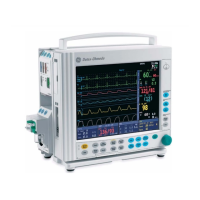
